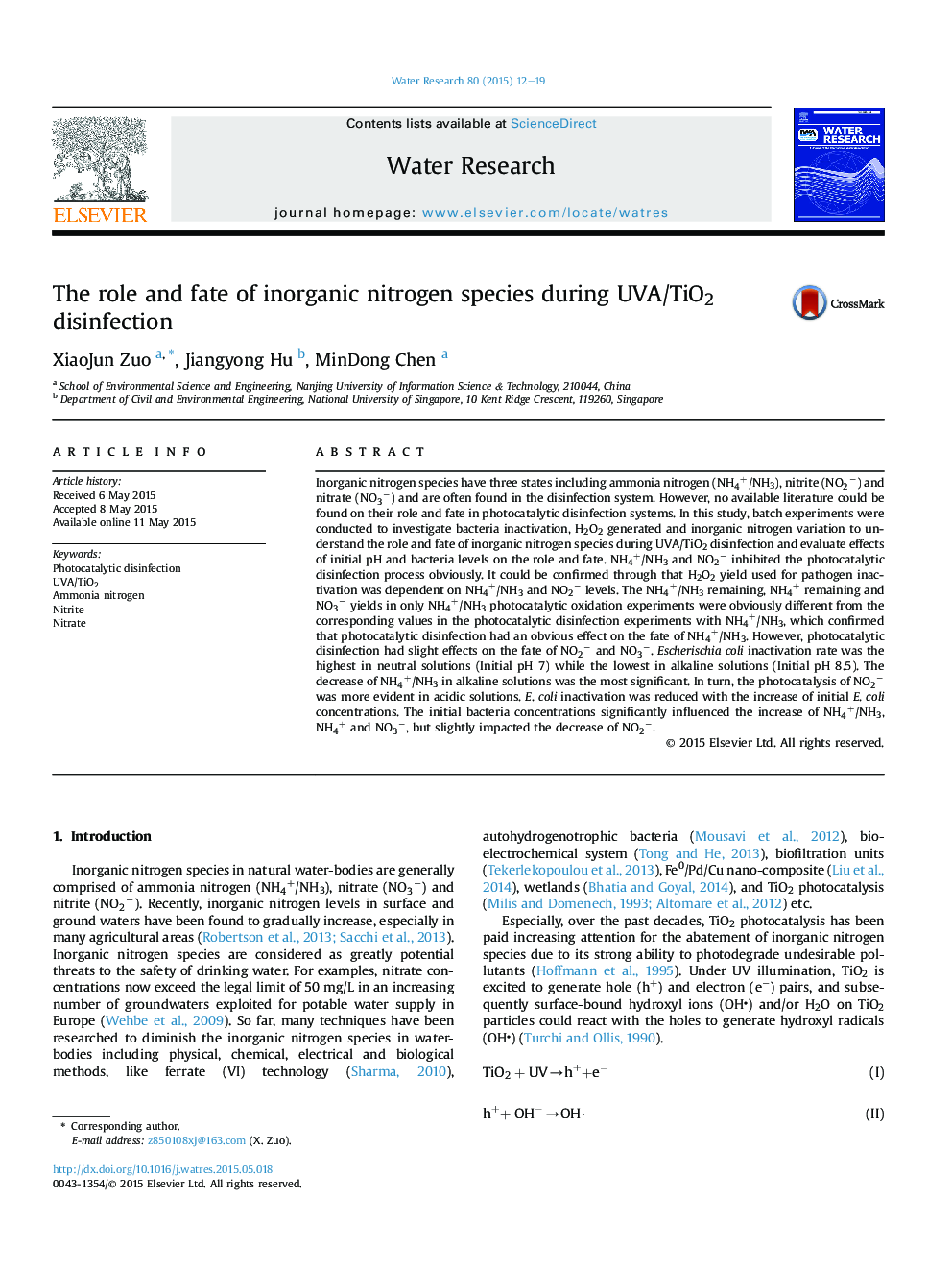| Article ID | Journal | Published Year | Pages | File Type |
|---|---|---|---|---|
| 6365659 | Water Research | 2015 | 8 Pages |
Abstract
Inorganic nitrogen species have three states including ammonia nitrogen (NH4+/NH3), nitrite (NO2â) and nitrate (NO3â) and are often found in the disinfection system. However, no available literature could be found on their role and fate in photocatalytic disinfection systems. In this study, batch experiments were conducted to investigate bacteria inactivation, H2O2 generated and inorganic nitrogen variation to understand the role and fate of inorganic nitrogen species during UVA/TiO2 disinfection and evaluate effects of initial pH and bacteria levels on the role and fate. NH4+/NH3 and NO2â inhibited the photocatalytic disinfection process obviously. It could be confirmed through that H2O2 yield used for pathogen inactivation was dependent on NH4+/NH3 and NO2â levels. The NH4+/NH3 remaining, NH4+ remaining and NO3â yields in only NH4+/NH3 photocatalytic oxidation experiments were obviously different from the corresponding values in the photocatalytic disinfection experiments with NH4+/NH3, which confirmed that photocatalytic disinfection had an obvious effect on the fate of NH4+/NH3. However, photocatalytic disinfection had slight effects on the fate of NO2â and NO3â. Escherischia coli inactivation rate was the highest in neutral solutions (Initial pH 7) while the lowest in alkaline solutions (Initial pH 8.5). The decrease of NH4+/NH3 in alkaline solutions was the most significant. In turn, the photocatalysis of NO2â was more evident in acidic solutions. E. coli inactivation was reduced with the increase of initial E. coli concentrations. The initial bacteria concentrations significantly influenced the increase of NH4+/NH3, NH4+ and NO3â, but slightly impacted the decrease of NO2â.
Related Topics
Physical Sciences and Engineering
Earth and Planetary Sciences
Earth-Surface Processes
Authors
XiaoJun Zuo, Jiangyong Hu, MinDong Chen,
